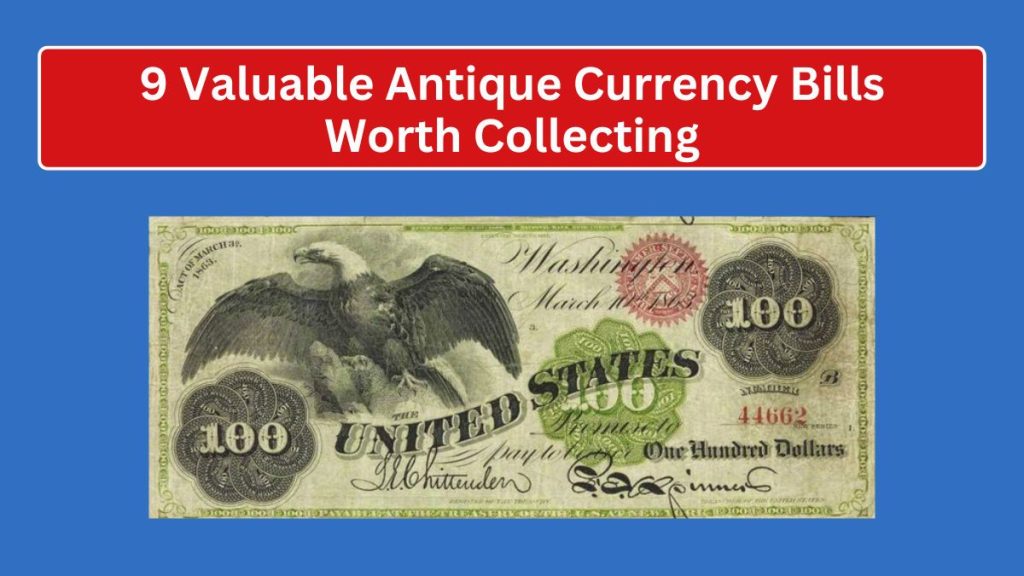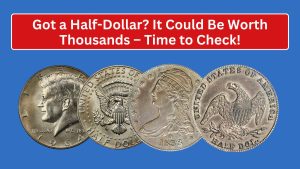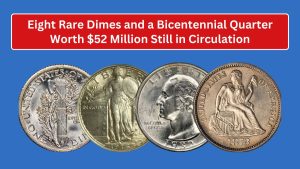Collecting antique currency bills is a fascinating hobby that allows collectors to delve into the history of finance, economics, and art. Certain bills are not just a piece of paper; they carry a significant historical and monetary value.
In this article, we explore nine valuable antique currency bills worth collecting. Whether you’re an experienced collector or a novice, these bills are an exciting addition to any collection.
9 Valuable Antique Currency Bills Worth Collecting
1. 1890 $1,000 Treasury Note (“Grand Watermelon” Note)
One of the most sought-after U.S. bills, the 1890 Treasury Note, commonly referred to as the “Grand Watermelon Note” because of the design of the zeroes on the back, is a rare gem.
Only a few of these bills exist today, and their auction prices have reached up to $3.2 million in recent years. The Grand Watermelon design stands as a testament to U.S. currency’s artistic and historical legacy.
Circulated Value: $1 million+
Uncirculated Value: Up to $3.2 million
2. 1928 $500 Gold Certificate
Gold certificates are a highly collectible type of currency. The 1928 $500 Gold Certificate, with its distinct yellow seal, is especially valuable due to its rarity. Gold certificates were redeemable in actual gold and were discontinued during the Great Depression, which makes them even more desirable today.
Circulated Value: $2,500
Uncirculated Value: $5,000+
3. 1863 $100 Legal Tender Note
Another notable addition to any collection is the 1863 $100 Legal Tender Note. Its large size and striking design make it a collector’s favorite. The bill’s value greatly depends on its condition, with uncirculated notes fetching far higher prices.
Circulated Value: $2,000
Uncirculated Value: $15,000+
4. 1929 $10 National Bank Note
This National Bank Note issued in 1929 is particularly collectible because each note was issued by a specific bank, making some versions rarer than others. Notes from smaller, lesser-known banks are much harder to find, and the values can fluctuate significantly depending on the issuing institution.
Circulated Value: $100 – $500
Uncirculated Value: $1,000+
5. 1934 $500 Federal Reserve Note
The 1934 $500 Federal Reserve Note is highly prized for its large denomination and limited printing. Collectors and investors alike seek this note for its historical significance, being part of a series of high-value notes that were mainly used for large bank transfers before the widespread use of electronic banking.
Circulated Value: $1,200
Uncirculated Value: $4,000+
6. 1918 $2 Federal Reserve Bank Note
A unique note that features Thomas Jefferson on the front and the image of the U.S. Capitol on the back, this note from 1918 is especially rare in pristine condition. These bills are highly sought after due to their historical context and aesthetic appeal.
Circulated Value: $300
Uncirculated Value: $1,500+
7. 1934 $1,000 Federal Reserve Note
Similar to the $500 note, the $1,000 bill from 1934 is another high-denomination note that was printed in limited quantities. These bills were withdrawn from circulation in the 1960s, making them an exciting and valuable addition to any collection.
Circulated Value: $2,500
Uncirculated Value: $7,000+
8. 1899 $5 Silver Certificate (“Indian Chief Note”)
The 1899 $5 Silver Certificate is one of the most popular collectible bills due to its iconic design featuring an Indian Chief. This bill was part of the silver certificate series that was redeemable in silver. The historical importance and unique design make it a valuable note.
Circulated Value: $600
Uncirculated Value: $2,500+
9. 1928 $2 United States Note (Red Seal)
Though $2 bills are still in circulation, the 1928 version with a red seal is particularly valuable. The scarcity of red-sealed notes from this time period makes them highly collectible, especially when found in good condition.
Circulated Value: $20
Uncirculated Value: $1,000+
Antique Currency Values
| Bill Name | Year | Circulated Value | Uncirculated Value |
|---|---|---|---|
| 1890 $1,000 Treasury Note (“Grand Watermelon”) | 1890 | $1 million+ | Up to $3.2 million |
| 1928 $500 Gold Certificate | 1928 | $2,500 | $5,000+ |
| 1863 $100 Legal Tender Note | 1863 | $2,000 | $15,000+ |
| 1929 $10 National Bank Note | 1929 | $100 – $500 | $1,000+ |
| 1934 $500 Federal Reserve Note | 1934 | $1,200 | $4,000+ |
| 1918 $2 Federal Reserve Bank Note | 1918 | $300 | $1,500+ |
| 1934 $1,000 Federal Reserve Note | 1934 | $2,500 | $7,000+ |
| 1899 $5 Silver Certificate | 1899 | $600 | $2,500+ |
| 1928 $2 United States Note (Red Seal) | 1928 | $20 | $1,000+ |
Conclusion
Collecting antique currency bills is an exciting and potentially lucrative hobby. The value of these bills comes not only from their face value but also from the rich history and craftsmanship they represent.
Whether you are new to currency collecting or a seasoned expert, adding one or more of these valuable notes to your collection can be an excellent investment and a gateway into the world of historical U.S. currency.
FAQs
1. What makes an antique currency bill valuable?
Several factors determine the value of antique bills, including rarity, condition, demand, historical significance, and unique features like errors or fancy serial numbers.
2. Where can I sell or buy valuable antique currency bills?
Collectors can buy and sell valuable bills through reputable auction houses, specialized dealers, and online platforms dedicated to currency trading.
3. Are Star Notes more valuable than regular bills?
Yes, Star Notes are generally more valuable because they are rarer and were printed to replace error notes.
4. How can I tell if my bill is authentic?
To ensure authenticity, it’s best to have your bills graded by a professional currency grading service like PMG or PCGS. They assess condition, rarity, and authenticity.
5. Can I still use antique bills as legal tender?
Yes, technically, U.S. currency bills of any denomination are still legal tender. However, their collectible value far exceeds their face value.
References
- U.S. Currency Auctions (2024). Current Values for U.S. Dollar Bills.
- Old Money Prices (2024). How Much is My Paper Money Worth?
- Love To Know (2024). Value of $2 Bills: Rare and Valuable Editions.
- The Fun Times Guide (2024). Collecting U.S. Paper Money: Tips for Collectors.






